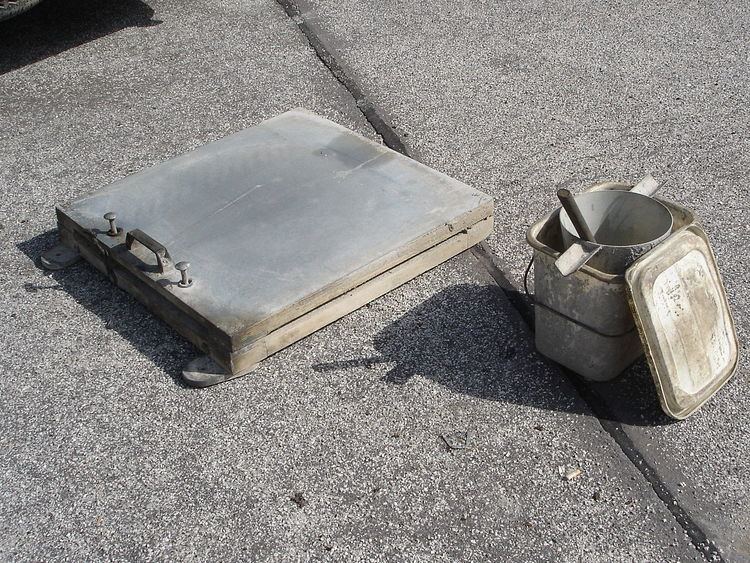 | ||
The flow table test or flow test, also known as the slump-flow test, is a method to determine consistency of fresh concrete. Flow table test is also used to identify transportable moisture limit of solid bulk cargoes. It is used primarily for assessing concrete that is too fluid (workable) to be measured using the slump test, because the concrete will not retain its shape when the cone is removed.
Contents
Application When fresh concrete is delivered to a site by a truck mixer, its consistency needs to be checked before it is poured into formwork.
If consistency is not at the desired level, concrete will not have the required strength and other qualities once it has set. If concrete is too pasty, cavities may form within it. Rebar may become corroded, and concrete will crack. Cavities also reduce the concrete strength.
